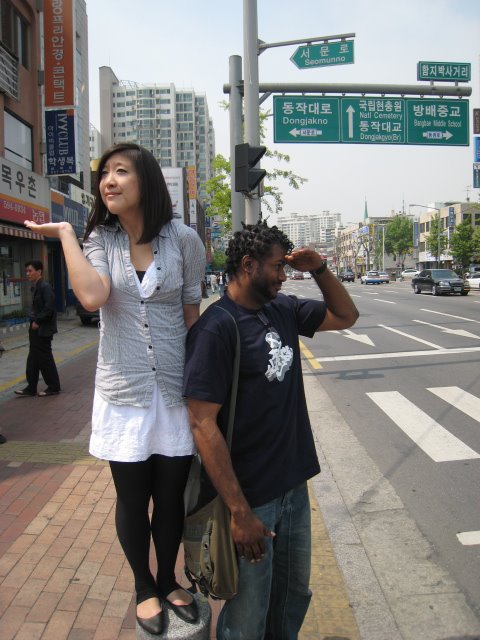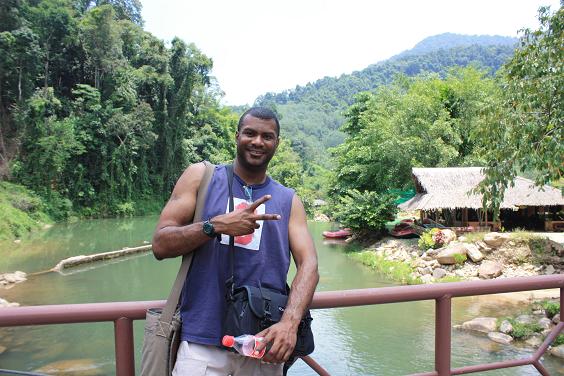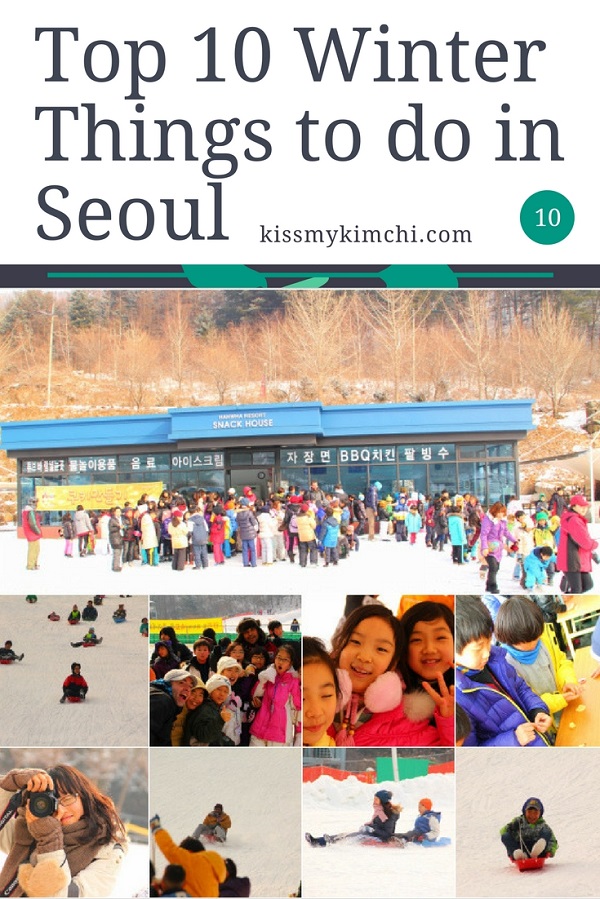If you’re visiting Tokyo and you’ve got the time then getting out of the city on a day trip is a must. The city is fabulous but there’s nothing like a great escape into the outlaying countryside to clear the lungs and get in touch with your more natural side.
Two day trips in particular are especially noteworthy. On my last trek to Tokyo we hit both Kamakura and the Fuji Five Lakes.
I had no idea what to expect in Kamakura. The short hour long train ride from Tokyo didn’t leave me much time to contemplate what was coming my way. Thankfully, as luck would have it, a fellow traveler on the train struck up a conversation. He turned out to be a plucky old dude, amiable, with a big smile and easy manner. He explained he rode the trains to Kamakura every day. Not only to enjoy the scenery but to also practice his English skills on foreign tourists. He ran off his list of idioms and raved about his past trip to Washington DC and Houston. He told stories about the sights of Kamakura and then presented a map with the most popular spots marked off. At the station a quick wave goodbye and our adventure began.
The most important spot in Kamakura is the shrine Tsurugaoka Hachimangu. Dedicated in honor of Hachiman the patron god of the samurai the shrine can be reached via the shop lined Wakamiya Oji street in the middle of which lies the Dankazura, a tree lined pedestrian path, that’s a sure way to find some shade as you stroll toward the shrine.
Along the way several young strapping men will lingering around to offer you a ride in their rickshaw. You’re better off skipping that pricey option and instead rent bicycles. Not only will you save some yen but you’ll not be under any hasty time constraints.
Along the route multiple towering gates mark your approach to the shrine. Once inside the grounds two ponds bursting with gigantic lily pads flank the path. It’s a huge space and quite suitable for the yearly performances and festivals held throughout the year. Keeping straight ahead brings you to the staircase up to the main hall of the shrine.
After the shrine make your way back taking the Komachi-dori shopping street. It’s here you’ll find souvenir shops, restaurants, boutiques, and shops selling all manner of knick knacks, trinkets, scarves, and much more.
At this point we headed toward the station for the train the Endoen line to Hase station. The main attraction there was no other than the Great Bronze Buddha of Kamakura or as I affectionately called him, Bud.
For 200 yen you can enter the temple grounds and watch in wonderment at one of Japan’s tallest Bronze statues. It’s a sight to behold but I suggest skipping the chance to see the inside of the statue as it’s a let down. You don’t get to go up the ladder to the windows at the back of the statue at all. So instead marvel from afar and live your National-Geographic-photographer-on-assignment dreams!
Not to be outdone another day trip on the outskirts of Tokyo is the The Fuji Five Lake region. The trip from Shinjuku bus station is a scant two hours. Once in the area you’ll be able to see each of the five lakes: Kwaguchilko, Saiko, Shojiko, Yamanakako, and Motosuko.
The surrounding area has a ton of things to do including hiking, camping, fishing, bird watching, hot springs, the Fuji Q Highlands amusement park, museums and various outdoor sports. Mount Fuji is easily accessible for climbing or photos unless of course you go on an overcast day like we did. Sadly our Fuji dreams never materialized.
We did however hit the biggest lake in the area: Kawaguchiko. From there we headed up to the Kachi Ropeway to get a sky high bird’s eye view of the surrounding area. The view is fantastic, but to our disappointment Mount Fuji was still blanketed in clouds.
I would actually suggest spending the night to make sure you can see everything the five lakes has to offer. Or you could just take the earliest bus from Tokyo and head back on the latest one. You should cover a decent amount of sights that way.



